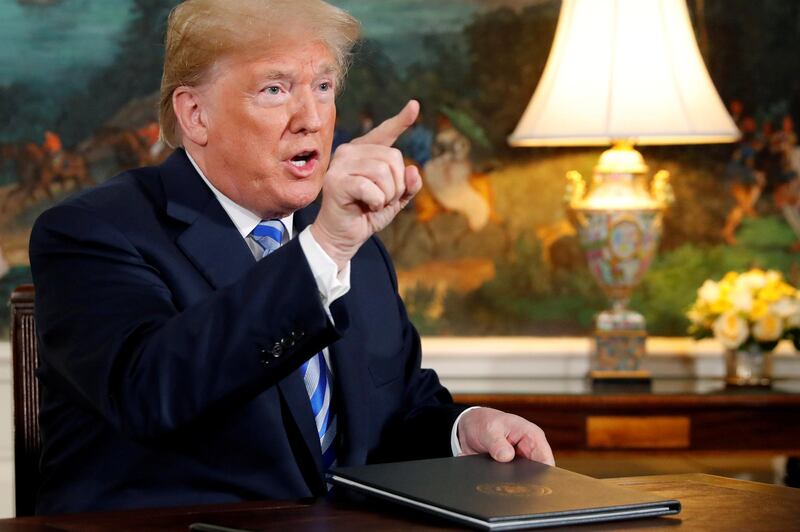Brent crude had a patchy performance last month, reaching three-year highs on Iran supply fears but losing on US President Donald Trump’s criticism of high prices.
This month, however, the oil bulls gained ground following Mr Trump's decision to pull out of the Iran nuclear deal and reimpose sanctions on the oil-producing country. At the time of writing, Brent crude futures peaked at 3.5-year highs on the back of Trump’s decision, meaning that the oil bulls have good reason for optimism at least in the short-term.
While it is too early to really know how the move will play out, we now know that it is unilateral. The key question is how much of Iran’s one million oil barrels per day will be taken off the market with Iran sanctions? And that depends on how much compliance there is from the US’s European allies and more importantly from Asian economies such as China, India, South Korea, and Japan.
There is little doubt the pressure on supplies from Iran will have a supportive impact on prices, but US producers are expected to increase output and Opec has the spare capacity to fill in any gaps in the mid-term, so this factor is likely to have a limited effect.
The same cannot be said of the biggest risk factor by far; Iran may turn its back on the international community completely and redouble efforts to develop its nuclear industry. Geopolitical tensions would likely ratchet up to record levels, putting sharp upward pressure on oil prices and breaking the catch 22 of US rising supplies versus Opec plus Russia supply cuts.
_______
Read more:
Oil soars to three-and-a-half year high after Trump's Iran nuclear decision
Dollar gains against the yen amid Iran uncertainty
Crude prices continue to surge as dollar steams ahead
_______
The White House has incentivised the domestic oil industry to boost investment and expansion, thus matching Opec’s supply cuts with supply increases. The catch 22 has kept global oil prices on the bearish side because of the ample supplies. But the recent return of sanctions on Iran has triggered supply concerns and boosted prices. The same may be said of another key US policy - Mr Trump’s economic protectionism. If the policy extends to higher tariffs to protect the US oil industry as it did with the steel industry, it is possible that a buying frenzy might be sparked to secure supplies at lower prices.
It is worth noting that from the US government’s perspective, increased revenues from import tariffs may help reduce the country’s national debt, or at least counterweigh losses from tax cuts for businesses. There is therefore a significant motive for the state to maximise its tax revenues from tariffs. The increased demand from additional high tariffs might see oil prices going sharply higher, at least temporarily, judging by what happened to steel prices, which sustained higher prices towards the end of last month following high import tariffs.
Other fundamentals driving oil prices up stem from Asian demand, which is seen going higher on the back of a buying spree by China. Indeed, in another side of the cold trade war, China may already be stockpiling oil in anticipation of US tariffs on the commodity. Reports of sudden and unexpected record high levels of demand from China have supported global oil benchmarks rise towards $80 per barrel. The country is reportedly set to buy the most oil it has ever bought within any given period at more than nine billion barrels, nearly 10 per cent of global demand. Other explanations are being offered, such as depleted inventories, but given that it is the low maintenance season and follows on the heels of steel tariffs, eyebrows are lifting as investors mull the impact on oil prices. Whatever the reasons, demand suddenly shot up from China. Added to Opec’s supply cuts and a determined reduction in output from Saudi Arabia, and it appears that the upward drivers are gaining ground.
Looking ahead, I expect more developments from the Iran situation as we head towards Opec’s summit in June. US supplies are still a significant factor in counterweighing Opec cuts, but China’s powerful lift in demand is now adding to Opec plus Russia’s strategic strengths. If Opec stands pat on supply cuts, the bulls can count on a win. Finally, Mr Trump’s latest market bombshell is a turning point for the oil markets, which are now showing a marked bullish trend likely to have plenty of fuel from a host of supply and geopolitical concerns.
Hussein Sayed is the chief market strategist at FXTM






